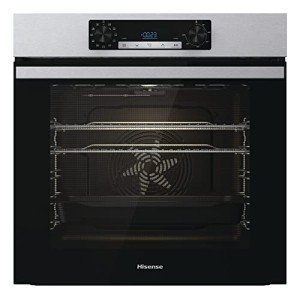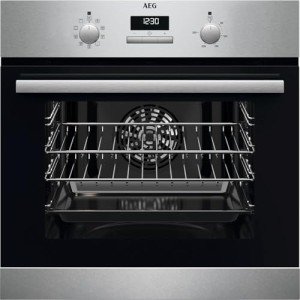
Single Integrated Oven
Add a review FollowOverview
-
Founded Date April 9, 1999
-
Sectors General Labour
-
Posted Jobs 0
-
Viewed 10
Company Description
The 10 Scariest Things About Single Electric Ovens
The Comprehensive Guide to Single Electric Ovens: Features, Benefits, and Buying Tips
In today’s fast-paced world, cooking in your home is becoming increasingly popular as individuals find happiness in preparing meals that not only please their hunger however also permit them to reveal their imagination. At the heart of many cooking areas is the single electric oven, a necessary device that provides benefit and dependability. This post explores the different aspects of single electric ovens, including their features, benefits, and pointers for picking the right one. Furthermore, it will attend to regularly asked concerns to supply a much deeper understanding of this valuable kitchen tool.
What is a Single Electric Oven?
A single electric oven is a standalone or built-in device that runs utilizing electrical power as its primary heat source. Unlike double ovens, which provide 2 separate cooking compartments, a single electric oven provides one cooking cavity, making it perfect for smaller spaces or for those who do not need numerous cooking choices at when.
Features of Single Electric Ovens
Single electric ovens come with numerous features that enhance their performance and usability. A few of the typical features include:
| Feature | Description |
|---|---|
| Convection Cooking | Uses a fan to circulate hot air for even cooking. |
| Self-Cleaning | Automatically cleans up the interior by raising the temperature. |
| Digital Controls | Easy-to-use touch controls for precise temperature level settings. |
| Multiple Cooking Modes | Options like baking, broiling, roasting, and more. |
| Energy-Efficient | Generally more energy-efficient than gas designs. |
| Timer Functions | Built-in timers for better cooking management. |
| Smart Features | Wi-Fi connectivity for push-button control via smartphone apps. |
Benefits of Using a Single Electric Oven
-
Consistent Cooking Temperature: Electric ovens supply a stable temperature, making sure uniformly prepared food without the hotspots often found in gas ovens.
-
Easy to Clean: Many electric ovens included self-cleaning functions that eliminate the need for scrubbing and chemical cleaners.
-
Greater Baking Capacity: Single electric ovens typically provide more baking area than their range equivalents, making them suitable for baking large items like roasts or casseroles.
-
Security: Electric ovens remove the dangers related to gas leaks and offer features like automatic shut-off that enhance safety.
-
Versatile Cooking Options: With various cooking modes, electric ovens can quickly deal with a wide array of dishes, from baked products to roasted meats.
Factors to consider When Buying a Single Electric Oven
Selecting the best single electric oven can substantially affect your cooking experience. Here are some factors to think about:
-
Size and Space: Measure your kitchen space to make sure the oven will fit completely. A lot of single ovens have basic dimensions, but it’s important to validate.
-
Type of Installation: Determine if you want a freestanding unit or a built-in design. Built-in models typically integrate better with cabinetry.
-
Power Requirements: Ensure that your kitchen’s electrical system can support the oven’s power requirements, which normally range between 240 to 280 volts.
-
Expense and Brand Reputation: Research various brands and check out client evaluations, considering both preliminary expenses and long-lasting dependability.
-
Energy Efficiency: Look for designs that include energy-saving functions to reduce electricity expenses.
-
Guarantee and Support: Choose a brand name that offers excellent client assistance and service warranty protection to make sure help in case of future repair work.
Popular Brands of Single Electric Ovens
- Bosch: Known for their reliability and sleek styles.
- GE Appliances: Offers a series of cost effective and feature-rich models.
- Whirlpool: Famous for their durable and efficient ovens.
- Samsung: Incorporates wise innovation into their home appliances.
- Maytag: Renowned for high-performance ovens designed for heavy use.
Often Asked Questions (FAQs)
1. What is the average life-span of a single electric oven?
The average life-span of a single electric oven is roughly 10 to 15 years, depending upon the brand, usage, and maintenance. Regular cleaning and timely repairs can extend its life-span.
2. Do single electric ovens consume a great deal of electrical energy?
Single electric ovens can be energy-efficient, depending upon the model. A lot of contemporary ovens featured energy-saving functions that can help reduce electrical power usage.
3. Can I install a single electric oven myself?
While it is possible to install a single electric oven yourself, it is highly advised to employ an expert electrician, specifically when it involves electrical connections.
4. How much do single electric ovens cost?
The expense of single electric ovens can differ commonly. On average, you can expect to spend between ₤ 500 to ₤ 2,000, depending on the brand name, features, and innovation consisted of.

5. Are single electric ovens better than gas ovens?
This can depend on private choices. Electric ovens frequently supply more consistent temperature control and are easier to clean, while gas ovens tend to heat up faster and provide much better temperature level control for specific cooking methods.
Single electric ovens act as a foundation in contemporary kitchen areas, offering dependable performance and a variety of functions to improve the cooking experience. Their ability to cook food uniformly, combined with easy-to-clean functionalities, make them a preferred option for lots of home cooks. By comprehending their features, advantages, and what to think about before acquiring, customers can make informed choices that line up with their cooking requirements and kitchen space. In the end, choosing a single electric oven may effectively elevate the happiness of cooking in the house, encouraging more people to explore the culinary arts.


